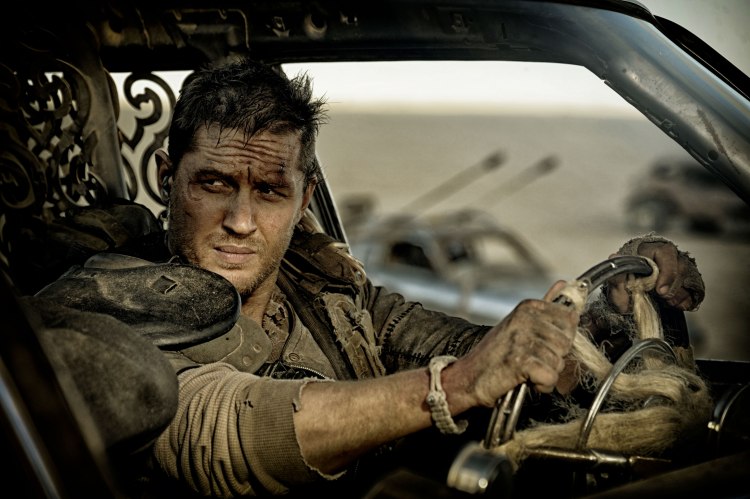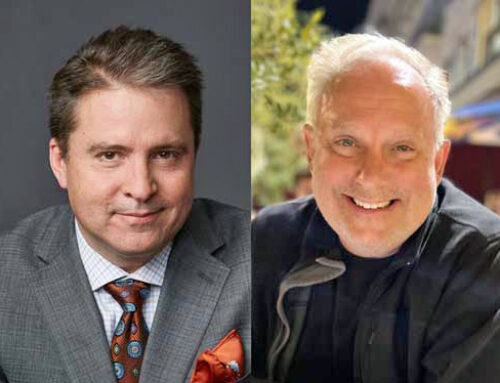A 70-year-old filmmaker who’s spent the last 25 years of his career making comedies, dramas, and children’s movies decides to revive the action franchise that put him on the map in the 1980s, but has been inert for 30 years, and recast its iconic star whose career has long since flamed out amid controversy. What could possibly go wrong?
Nothing, apparently. Academy Award-winning writer-director George Miller is still at the top of his game as a filmmaker, and every frame of Mad Max: Fury Road taps into the surreal, bizarre future-crash vision that made the original films cult favorites. The movie is a gloriously insane and visually stunning work of unabashed B-grade entertainment that feels fresh despite its decades-long pedigree.
Miller wisely avoids rebooting the franchise, opting instead for a quick bit of voiceover recounting the brutal origin of cop-turned-road warrior Max Rockatansky (Tom Hardy) and the social and environmental collapse that turned the world into a desolate wasteland. He then throws Max into the thick of it by immediately having him captured by minions of the Immortan Joe (Hugh Keays-Byrne, who played the main villain of the original Mad Max way back in 1979), a a ruthless, scarred warlord who breathes through a face mask attached to a bellows-like respirator that lends him a post-apocalyptic Vader-ish quality. Joe rules over a minuscule oasis in which uses the populace as slave labor, ruling over them by controlling the water supply and an army of psychotic, quasi-religious foot soldiers called War Boys.
All hell breaks loose when Joe’s chief warrior, Imperator Furiosa (Charlize Theron) betrays him and helps his five “wives” — fertile young women that he keeps as breeding stock — escape. Cue a nearly two-hours long chase that redefines the term “vehicular manslaughter”. Like its predecessors, Fury Road is a minimalist work with a bare-bones structure and relentless pace. Exposition of any sort is almost entirely absent, and most of the dialogue is perfunctory. Miller and co-writers Brendan McCarthy, Nick Lathouris, and Eric Blakeney keep everything terse and to the point. Life and death after the fall of civilization is a serious thing, after all, and the story ticks along like clockwork, throwing the audience reversals and consequences rather than twists and turns.
Miller doesn’t exactly re-invent the wheel when it comes to action set pieces; rather, he displays a master’s touch in terms of coherence and economy of visual language, avoiding the hyperactive and confusing over-editing common among younger directors and framing the action with precision and flair. Aside from a few touches (such as the impressive mega-storm sequence), the use of CGI is kept to a minimum. Miller sticks with the time-tested appeal of wipe-outs, explosions, and gross bodily harm, and his old-school approach feels entirely fresh, as does the movie’s gleefully over-the-top production design. Fury Road‘s war rigs and other assorted battle-mobiles would give the cast of American Choppers nightmares, as would the neo-tribal misfits who man them. (The most impressive is a gigantic rig that provides Immortan Joe’s travelling theme music, complete with a quartet of taiko drummers on the back, and, on the front, a rocker with a flame-throwing double-necked guitar and a king-size wall of amplifiers that would give Pete Townshend an erection.) John Seale’s sumptuous cinematography, mostly a mix of orange-brown earth tone, orange-red fireballs, and silver-grey skies rounds out the unique visual style that is equal parts John Ford western and punk rock dystopia.
None of which buries the characters, by the way. Max and Furiosa are united by a common cause — survival — out of necessity rather than honor or altruism. In fact, one of the movie’s most compelling details is the degree to which these anti-heroes must go to earn each other’s trust. It’s a nice touch of gritty realism that fleshes out Miller’s barbaric world. Much like the spaghetti western heroes that inspired him, Max is a man of words, and uses none when a grunt or gesture will do, and the undeniably charismatic Hardy proves to be a worthy successor to Mel Gibson, capturing Max’s haunted past and reluctant heroism. max is a known quantity, however, and he’s occasionally upstaged by Theron, whose Furiosa is a fascinating creation, a one-armed warrior with a diesel-punk prosthetic who is every bit as tough and hardened as Max, presented as his equal and consistently portrayed as such. She’s someone you want to see more of, and if Miller sticks with his original plan to make a follow-up titled Mad Max: Furiosa, then we likely will.
The phrase “game changer” is being tossed around in some reviews; that’s a bit much, but it is fair to say that Fury Road will raise audience expectations to the degree that every producer and studio chief with an action flick tentpole scheduled for this summer will soon be reaching for the painkiller of his or her choice.






